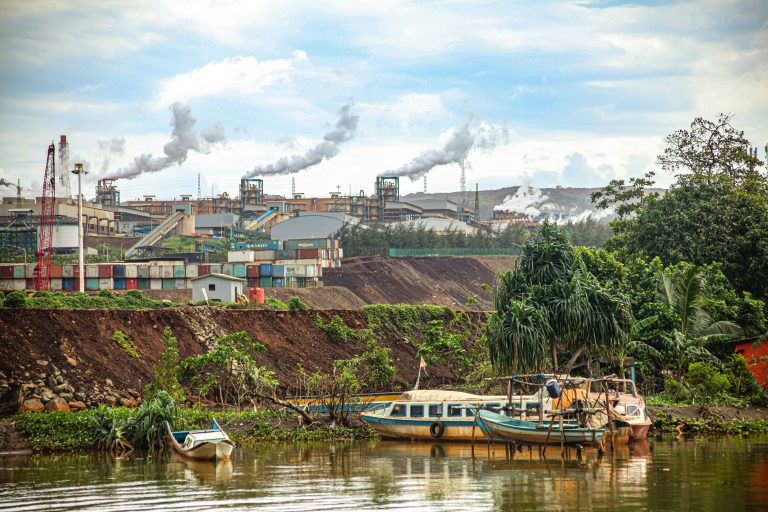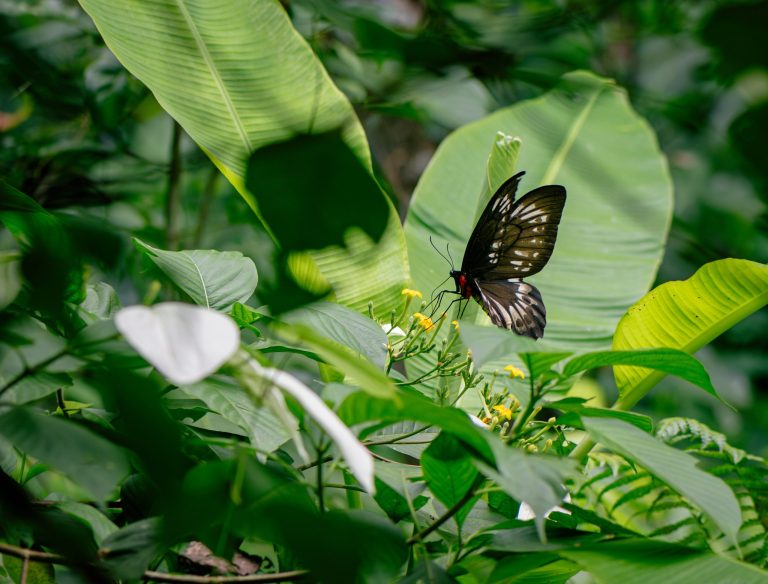Seizure of customary land, forced conversion, social exclusion, impoverishment, and famine: these are the types of bleak stories we often hear about indigenous peoples. For centuries, those in power have systematically marginalized these groups in what is now Indonesia, often claiming that they are backwards and in need of modernization.
In fact, it is these indigenous peoples who have long been the stewards of the traditional knowledge that forms the foundation of the archipelago’s cultural diversity. As the world faces climate and humanitarian crises, it is these peoples who show the resilience, wisdom, and savvy to provide lasting solutions and alternatives to a development blueprint that habitually disregards the environment.
Under the New Order regime, the marginalization of indigenous communities was justified through the narrative of development, which focused on four central issues: economic growth, capital accumulation, structural transformation, and government intervention.Click To TweetWe are launching Project Multatuli with a series of articles on indigenous peoples. This series aims to shine a light on the situation faced by these groups and to give them room to share their stories.
The series covers the COVID-19 pandemic, food sovereignty, the role of women in communities, youth movements, environmental issues, and land conflicts with both the private and the public sectors. Our reporting seeks to expose the problems that indigenous communities face and showcases how they use local knowledge to solve those issues, particularly in the midst of the pandemic.
Walls Closing In
The continuing land conflicts between indigenous peoples and both private sector corporations and state-owned enterprises is one of our main concerns.
On the afternoon of August 26, 2020, police officers arrived at the house of Effendi Buhing, the traditional head of the Laman Kinipan community in Lamandau, Central Kalimantan. They arrested Effendi on charges of stealing equipment belonging to palm oil company PT Sawit Mandiri Lestari, which has long been in conflict with the Kinipan indigenous community.
A video of Effendi’s arrest, showing him being dragged by three police officers while his wife screams in the background, elicited public outrage. Effendi was eventually released, but the conflict between the Laman Kinipan indigenous community and palm oil companies encroaching on their lands did not end there.
The case was just the tip of the iceberg. According to the Community and Ecologically Based Society for Legal Reform (Perkumpulan Huma), most of the 326 agrarian and natural resource conflicts recorded in 2018 involved indigenous communities. Of the 186,631 people who were affected by the conflicts, which took place across 2.1 million hectares of land, 176,637 were members of indigenous communities.
These communities existed long before the formation of Indonesia. They have lived in their traditional homelands and developed food production systems adapted to specific environments. They have safeguarded nature and are the foundation of the country’s cultural diversity. But their existences are under increased risk — and in some cases have been destroyed entirely — by Indonesia’s model of development, which allows the confiscation of the land and natural resources that serve as their lifeblood.

Systematic Marginalization and Abasement
Under the New Order regime, the marginalization of indigenous communities was justified through the narrative of development, which focused on four central issues: economic growth, capital accumulation, structural transformation, and government intervention. During this era, indigenous peoples were not only denied the right to land and natural resources, they were also seen as a social problem that had to be solved, an obstacle to advancement and modernity. Indigenous communities’ histories, traditions, and local knowledge were not recognized by the government as valuable legacies; instead they were suppressed in the name of unity, uniformity, and conformity.
The branding of indigenous peoples as a social problem can be seen in a book that was used by the Social Affairs Ministry at the time, The Remote Community Welfare Development Project Service System (1981). To address this “social problem”, the government created several development programs, such as the Remote Community Welfare Development Project (PKSMT).
While some strides have been made since, the marginalization of indigenous peoples is still apparent in the definition of terms used by the Social Affairs Ministry. It defines indigenous peoples as groups that are bound together by geography, economic and/or sociocultural norms and are poor, isolated and/or socioeconomically vulnerable. The official term the ministry uses is Isolated Indigenous Communities (KAT).
These concepts and definitions of prosperity are formulated and determined unilaterally by the government using a number of indicators that tend to discredit indigenous peoples’ ways of life. Nomadic peoples, for example, such as the Rimba people of Jambi and the Sakai in Riau, are seen as uncivilized. Those who practice rotation farming, such as Dayak communities in Kalimantan, are considered to be damaging the forest.
Forests that indigenous peoples used to call home have been taken over by the state and handed to corporations to exploit, as has been done in Kalimantan and Sumatra since the late 60s and more recently in Papua and other islands.Click To TweetIn response to the “social problem” indigenous communities pose, the Indonesian government started the Remote Community Resettlement Program (PKMT). Moving indigenous peoples to modern-style housing was seen as a way to “civilize” them. One official indicator of the success of the PMKT is the number of indigenous people who have converted to religions that are officially recognized by the government.
A story book for elementary school children published in 2018 by the Education Ministry’s Language Development and Cultivation Agency shows this perspective clearly. The book portrays the participation of a member of an indigenous community in the PKMT as a smart decision.
“Thank God my father listens well and obeys what the government says,” says the book’s main character, a young Sakai boy. “They say that if we want to advance and not be left behind, we have to work hard on the farm. We can’t be moving from place to place in the forest.”
As in colonial times, the marginalization of cultural practices, religious beliefs and living space is followed by the seizure of natural resources. Forests that indigenous peoples used to call home have been taken over by the state and handed to corporations to exploit, as has been done in Kalimantan and Sumatra since the late 60s and more recently in Papua and other islands. This is the main cause of the many agrarian conflicts throughout the country.
This continued exploitation has resulted in not just the impoverishment of indigenous peoples but also in large-scale environmental damage that has led to climate and health crises. The country’s yearly blight of field and forest fires and the massive flooding that hit Kalimantan at the beginning of 2021 are concrete indicators of the decline in the carrying capacity of the environment as a result of mismanagement.
Traditional knowledge does not only benefit indigenous communities, it plays a key role in safeguarding the environment globally. Even though the world’s 370 million indigenous people make up less than 5 percent of its population, they manage over 25 percent of the world’s land and protect some 80 percent of its biodiversity.
This means that the seizure of natural resources from indigenous peoples amounts to casting out the last natural stewards of the environment. Similarly, protecting indigenous peoples and their rights also means protecting the natural diversity that sustains the Earth.
Food Sovereignty
Indigenous peoples in Indonesia are often seen as synonymous with backwardness, poverty, and even hunger. In 2018, indigenous peoples in the remote region of Asmat, Papua, suffered from malnutrition that resulted in the deaths of 72 children. In July 2018, around 170 members of the Mausu Ane tribe in Seram island, Central Maluku, suffered from food shortages that led to three deaths. In 2015, 11 members of the Rimba people of Jambi died over the course of six months.
Indigenous Peoples and Food Sovereignty by Ahmad Arif shows that indigenous groups that still use traditional methods of agriculture to fulfill their own needs tend to have better levels of food security. They are able to fulfill their food needs and have better general nutrition than communities that have switched to a more market-oriented, modern food system. Cases in point include the Boti indigenous community in South Central Timor, East Nusa Tenggara, and the Baduy indigenous community in Lebak regency, Banten.
In contrast, indigenous communities that are forced to change their food habits often experience food insecurity. In addition to Asmat, Papua, this phenomenon can be seen in Cilebang village, Lebak regency, Banten, and the villages of Meorumba and Mauramba in East Sumba, East Nusa Tenggara.
Food policy in Indonesia should take into account the diversity of community characteristics. Food sovereignty based on local food crop cultivation should be a main indicator of success. The rights of indigenous peoples to food cannot be separated from their rights to land, territory, natural resources, and sovereignty.
Helping Tell Indigenous People’s Stories
With our series of articles, which we plan to continue for at least a year, Project Multatuli seeks to provide a space for indigenous people’s voices to be heard.
We hope to create an alternative to the dominant narrative that indigenous peoples have to change for the sake of development. On the contrary, in the midst of the many crises that we face, we should look to them for guidance and inspiration for the future.
This article is part of #IndigenousPeople series.









